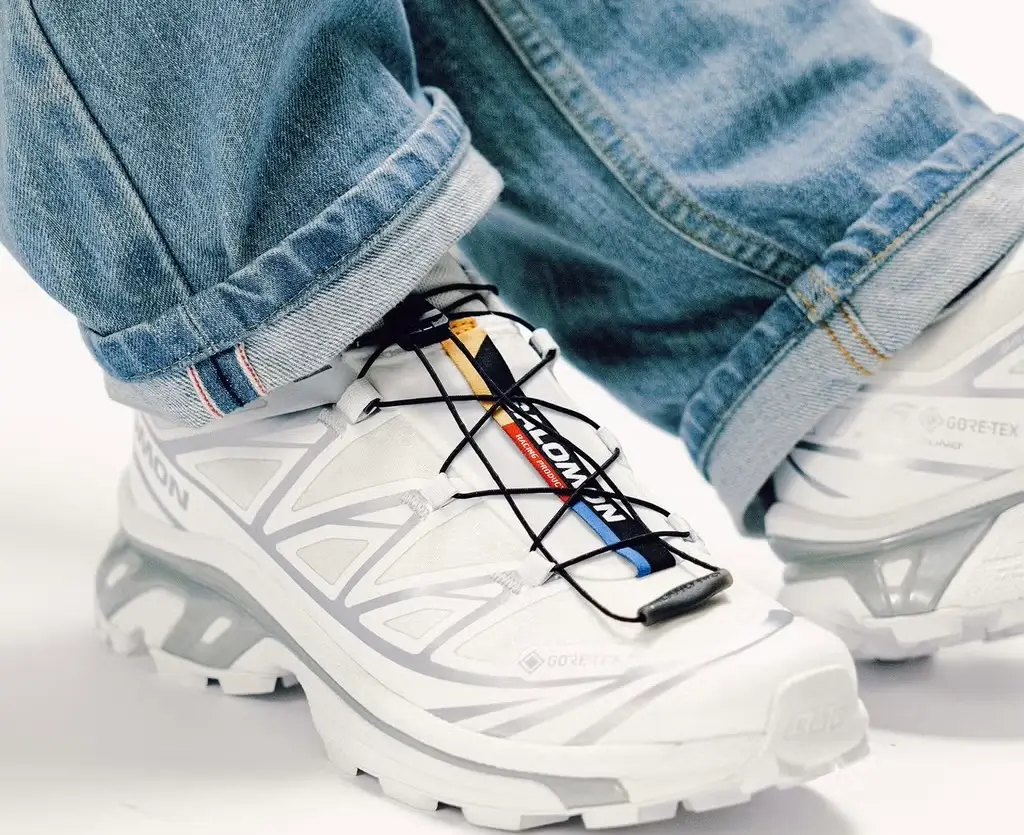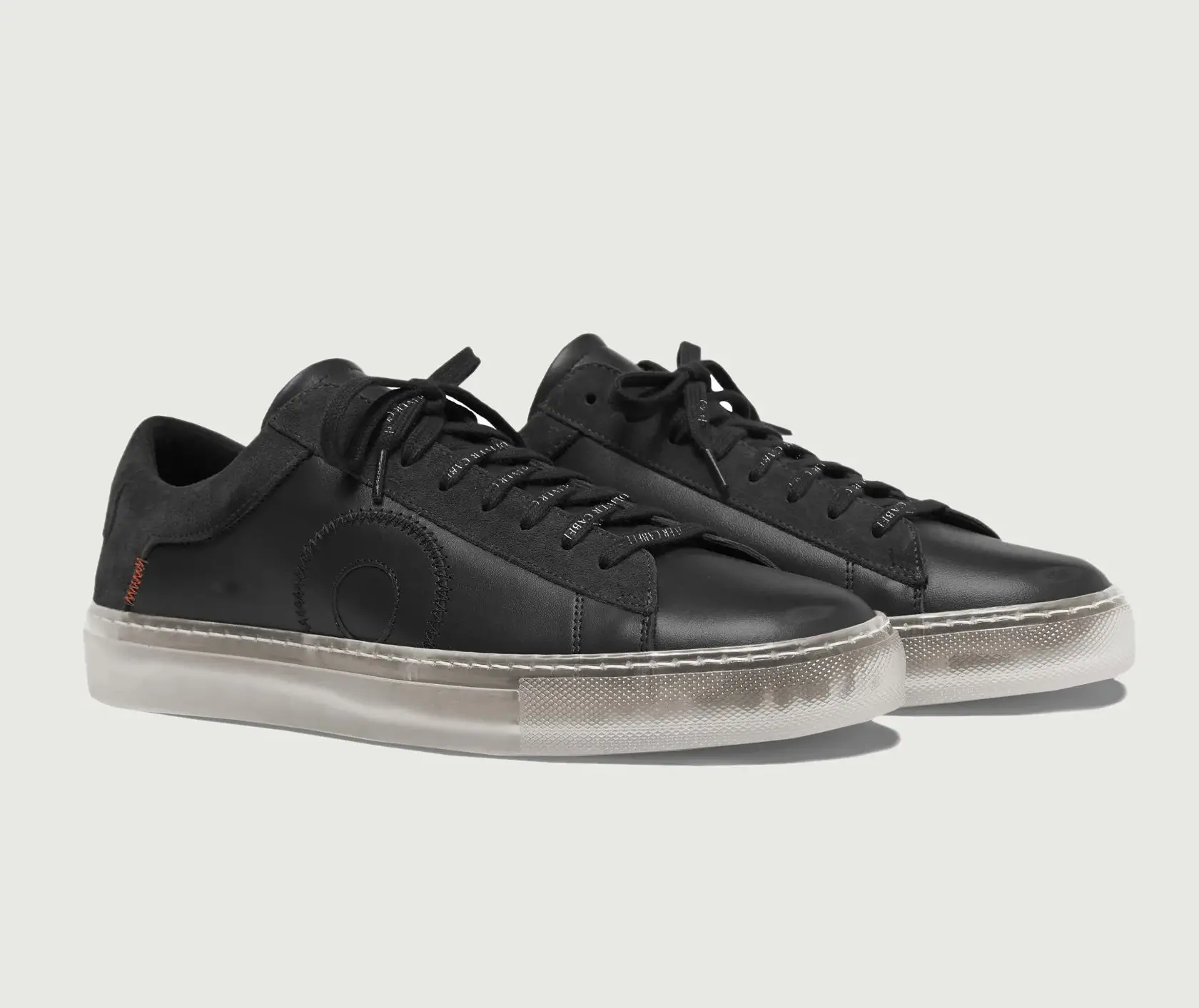In an era where fashion increasingly blurs the line between natural terrain and urban sprawl, few partners embody this convergence as meaningfully as the union of A-COLD-WALL and ROA.
Helmed by British designer Samuel Ross, A-COLD-WALL is known for its industrial design vocabulary and commentary on social architecture. ROA, rooted in Italy’s Dolomites, brings a rugged authenticity to outdoor footwear through a distinctly technical lens.
Together, the two brands present a bold proposition—one that walks the delicate path between high-altitude resilience and metropolitan minimalism.
At the heart of this mixture lies a reimagined hiking shoe—an outdoor staple that under normal conditions evokes images of dirt trails and forested ascents. But in Ross’s hands, and through ROA’s performance-first engineering, the silhouette transforms.
This is not just a shoe, but a statement about duality: movement between extremes, man-made materiality meeting natural purpose, and the evolving spirit of global streetwear.
The Base: A ROA Hiking Icon
The foundation of the flow is a proven ROA hiking shoe—its identity unmistakable, yet reinterpreted. Known for their high-traction soles, ergonomic design, and structural integrity, ROA footwear is typically favored by seasoned hikers and alpine adventurers.
But for this capsule, the shoe’s purpose is extended beyond trail use. Retaining the core characteristics that define ROA—sturdy Vibram outsoles, protective toe caps, and supportive ankle construction—the model becomes a hybrid object, able to navigate both steep inclines and concrete grids.
What is remarkable is how this functionality remains intact even as the shoe’s form language is abstracted. No performance is sacrificed for the sake of aesthetic. Rather, the aesthetics amplify the original function by re-contextualizing it: How can a hiking shoe behave in an urban context without losing its outdoor DNA?
Material Narratives: From Terrain to Industry
Samuel Ross answers this question by reshaping the shoe through his unique material syntax. Known for his architectural forms and fascination with brutalist and post-industrial themes, Ross introduces a palette and texture regime that feels entirely metropolitan. Think matte synthetics, washed greys, asphalt blacks, and rusted oranges—all tones that mimic construction sites, derelict factories, and underground infrastructure.
Where ROA might traditionally lean on breathable mesh and leather combinations suited for alpine climes, Ross substitutes in more industrial fabrics—coated nylons, thermoplastic overlays, and metallic taping. These materials are not just aesthetic flourishes; they tell a story of environmental adaptation.
They mimic the kind of visual landscape one might find in metropolitan fringes—parking structures, ventilation systems, and scaffolded buildings—thus translating a hiking shoe into an urban uniform.
Additionally, reflective elements and angular paneling add a kinetic edge to the design. Depending on the viewing angle, the shoe’s appearance subtly shifts—a deliberate effect designed to mirror the ever-changing conditions of both mountain and city. This is not fashion for static display. It’s built for movement—across environments, across identities.
A Language of Convergence
At a thematic level, this collaboration is about connection—between the natural and the constructed, the solitary hike and the communal street, the practicality of gear and the symbolism of fashion. It’s about recognizing that both the mountain path and the alleyway serve as stages for self-expression, and that style can transcend environment.
The phrase “山と街をつなぐ – bridging the mountains and the city” is more than poetic framing. It captures the essence of the project: the creation of a new in-between space where boundaries dissolve. In this in-between, the hiker becomes a commuter, and the city-dweller becomes a wanderer. Neither is out of place. Both are moving toward something undefined, but shared.
Ross’s vision of the street has always been one of openness—where materials, identities, and intentions can shift. And in this collaboration, that openness finds new footing, quite literally. The shoe is a vehicle for change: of location, of mindset, of aesthetic expectations.
Streetwear Maturity and Outdoor Crossovers
This collaboration also speaks to a broader shift in fashion where streetwear—once rebellious and rooted in youth subculture—is evolving. In recent years, we’ve witnessed a growing fascination with gorpcore, utility gear, and outdoor aesthetics. High fashion houses now release rain parkas and trail runners as core components of their seasonal offerings. But not all such releases strike a balance between authenticity and styling.
The A-COLD-WALL x ROA project does. It respects the integrity of outdoor gear while translating it through a fashion lens. There’s no costume here—only a shared admiration. ROA’s credibility remains intact, and A-COLD-WALL ’s artistic language elevates the product without overshadowing its original purpose.
The collaboration becomes an exercise in restraint and reverence. Each brand speaks, but neither shouts. It’s a conversation—one that celebrates design intelligence and mutual recognition.
The Visual Campaign: A Journey Through Liminal Landscapes
The campaign imagery accompanying the release reinforces the conceptual underpinnings. Shot in semi-urban outskirts—deserts, roadside diners, concrete underpasses—the visuals blur the lines between destination and departure. Models wear the shoes not only while climbing or walking but while pausing, waiting, considering.
These moments are deliberate. They reflect the idea that movement doesn’t have to be explosive to be transformative. In stillness, there is a kind of arrival. And in these liminal spaces, we begin to understand the symbolic weight of a shoe that can carry us from one terrain to another—without ever needing to change.
Dressed in wide-legged trousers, tech jackets, and layered garments that float between utility and futurism, the figures in the campaign embody the ethos of the collection. They are travelers without clear origin, citizens of an imagined space where style and survival coexist.
Impression
The A-COLD-WALL x ROA union does not ask for mass approval. It is not an easy, crowd-pleasing shoe drop. It is thoughtful, challenging, and committed to design as a mode of inquiry. It interrogates how clothing and footwear function in multiple spheres—not just as protection, but as tools of identity construction.
By bridging the symbolic divides between mountain and city, rough terrain and refined design, Samuel Ross and ROA have succeeded in more than just producing a beautiful object. They’ve produced an idea—that style is a journey, and that journeys are most powerful when they pass through contradiction.
In this shoe, we walk through paradox. And with every step, we move closer to a future where boundaries fall away—and all terrain is open.
No comments yet.








